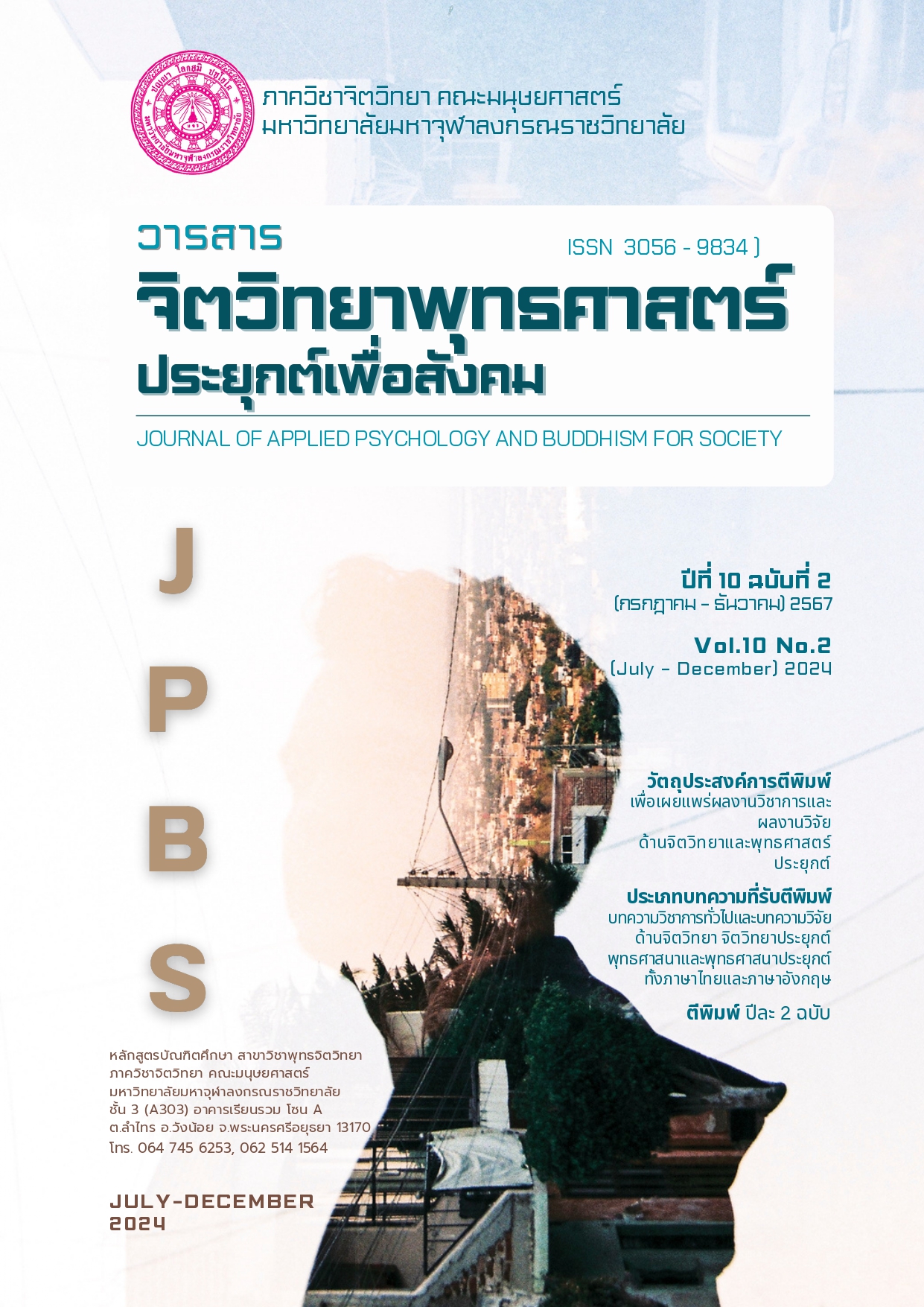The Buddhist Monk and Self-Care According to the Four Basic Necessities Principle
Keywords:
Buddhist Monk, Self-care, Four Basic Necessities PrincipleAbstract
This article presents a study on the self-care of monks based on the Four Basic Necessities Principle. The study reveals that Thai monks are currently facing complex health issues, particularly non-communicable chronic diseases such as diabetes (10.4%), hypertension (45.2%), hyperlipidemia (40.2%), gastrointestinal disorders (35.8%), and osteoarthritis (27.4%). In the time of the Buddha, health care for monks followed a well-defined system, which included the use of medicinal remedies from various sources-five types of medicines derived from plants, animals, and nature-as well as the use of Dhamma medicine, particularly the Seven Factors of Enlightenment (Bojjhanga) and the chanting of the Bojjhangakappiya Sutta. In modern times, the health care for monks integrates traditional wisdom with modern medicine, grounded in the Four Basic Necessities Principle. Health promotion follows the "3 Es" approach, which includes exercise, Eating, and environmental management, along with the "2 Ss," which focus on stress management and smoking cessation. Additionally, the National Health Constitution for Monks has been developed as a framework for systematic health care, aiming to make temples the central hub for community health and enhance health literacy among monks
References
กรมการแพทย์. (2562). สถานการณ์สุขภาพพระสงฆ์และการดูแลรักษา. กรุงเทพฯ : กระทรวงสาธารณสุข.
กรมอนามัย กระทรวงสาธารณสุข. (2562). แนวทางการดูแลด้านโภชนาการสำหรับพระสงฆ์. กรุงเทพฯ : กระทรวงสาธารณสุข.
ปิติณัช ราชภักดี. (2561). การสำรวจภาวะสุขภาพพระสงฆ์ในประเทศไทย พ.ศ. 2549-2559. กรุงเทพฯ : สำนักงานกองทุนสนับสนุนการสร้างเสริมสุขภาพ.
ปุ๋ย แสงฉาย. (2521). เภสัชกรรมแผนโบราณ. กรุงเทพฯ : กรมการแพทย์แผนไทยและการแพทย์ทางเลือก.
พระพรหมคุณาภรณ์ (ป.อ. ปยุตฺโต). (2556). การแพทย์แผนพุทธ. กรุงเทพฯ : มหาจุฬาลงกรณราชวิทยาลัย.
พระมหาสมพงษ์ สนฺตจิตฺโต. (2558). การพัฒนาศักยภาพพระคิลานุปัฏฐาก. กรุงเทพฯ : มหาวิทยาลัยมหาจุฬาลงกรณราชวิทยาลัย.
พระมหาสุทิตย์ อาภากโร และคณะ. (2556). การพัฒนารูปแบบและกระบวนการจัดการสุขภาวะของพระสงฆ์. กรุงเทพฯ : สำนักงานกองทุนสนับสนุนการสร้างเสริมสุขภาพ.
พระมหาสุทิตย์ อาภากโร และคณะ. (2561). การศึกษาพฤติกรรมสุขภาพของพระสงฆ์ในสังคมไทย. กรุงเทพฯ : สำนักงานกองทุนสนับสนุนการสร้างเสริมสุขภาพ.
มหาจุฬาลงกรณราชวิทยาลัย. (2563). แนวทางการส่งเสริมกิจกรรมทางกายที่เหมาะสมสำหรับพระสงฆ์. กรุงเทพฯ : มหาวิทยาลัยมหาจุฬาลงกรณราชวิทยาลัย.
“________”. (2539). พระไตรปิฎกภาษาไทย ฉบับมหาจุฬาลงกรณราชวิทยาลัย. กรุงเทพฯ : โรงพิมพ์มหาจุฬาลงกรณราชวิทยาลัย.
มหามกุฎราชวิทยาลัย. (2535). พระไตรปิฎกและอรรถกถา แปล. กรุงเทพฯ : โรงพิมพ์มหามกุฎราชวิทยาลัย.
สถาบันการแพทย์ฉุกเฉินแห่งชาติ. (2562). คู่มือการดูแลผู้ป่วยสำหรับพระคิลานุปัฏฐาก. นนทบุรี: สถาบันการแพทย์ฉุกเฉินแห่งชาติ.
สถาบันวิจัยระบบสาธารณสุข. (2563). รายงานการสำรวจสถานการณ์สุขภาพพระสงฆ์ในประเทศไทย. นนทบุรี: สถาบันวิจัยระบบสาธารณสุข.
สมเด็จพระพุทธโฆษาจารย์. (2560). แนวทางการพัฒนาจิตและปัญญาสำหรับพระคิลานุปัฏฐาก. กรุงเทพฯ : วัดสระเกศ.
สำนักงานกองทุนสนับสนุนการสร้างเสริมสุขภาพ. (2560). คู่มือการดูแลสุขภาพพระสงฆ์. กรุงเทพฯ : สำนักงานกองทุนสนับสนุนการสร้างเสริมสุขภาพ.
สำนักงานกองทุนสนับสนุนการสร้างเสริมสุขภาพ. (2563). รายงานสถานการณ์สุขภาพพระสงฆ์ไทย. กรุงเทพฯ : สำนักงานกองทุนสนับสนุนการสร้างเสริมสุขภาพ.
สำนักงานหลักประกันสุขภาพแห่งชาติ. (2564). ธรรมนูญสุขภาพพระสงฆ์แห่งชาติ พุทธศักราช 2560. นนทบุรี: สำนักงานหลักประกันสุขภาพแห่งชาติ.
Downloads
Published
How to Cite
Issue
Section
Categories
License
Copyright (c) 2024 Journal of Applied Psychology and Buddhism for Society

This work is licensed under a Creative Commons Attribution-NonCommercial-NoDerivatives 4.0 International License.






